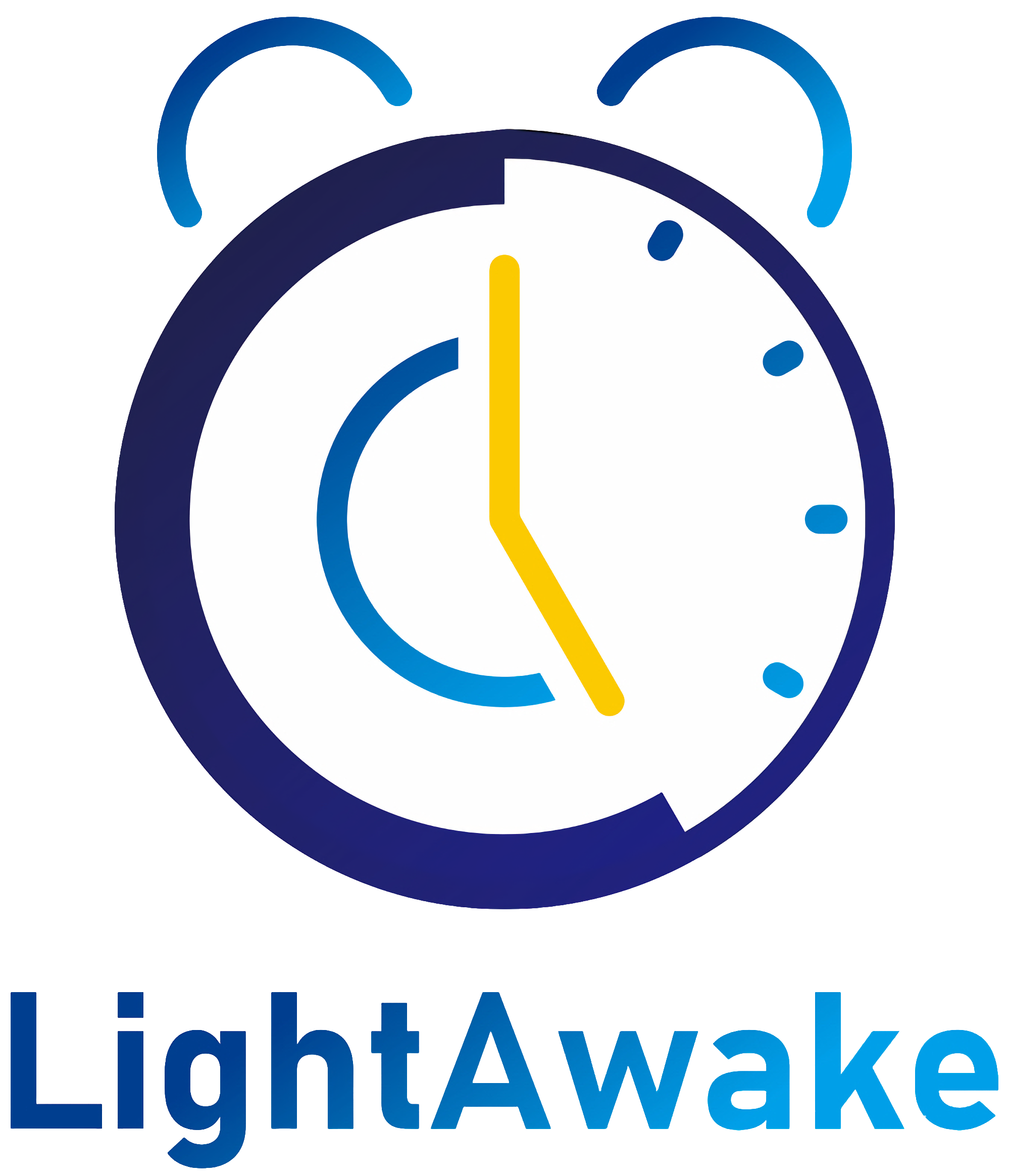Support
Light Awake works best on smartphones on the iOS and Android operating systems. That is the vast majority of mobile devices. You may also use the app on tablets like your iPad or Android tablet (including Galaxy Tabs, Kindle Fires, etc.).
Light Awake recommends you plug-in/wireless charge your device and set it on a nearby nightstand. Ideally you should angle the screen to point at you in vertical or horizontal orientation (both work).
If you want or need to lay your device flat on your night stand, consider placing near a reflective (i.e. white) wall to enhance the light produced. Also, consider using both the screen and LCD light alarm options to enhance your alarm.
If you do not charge your device, the Light Awake app will use a portion of your battery during the night. The screen will stay “dim” in a low power usage setting, but some power will be used. For this reason, if you cannot charge your device while using Light Awake, you have your device charged to at least 75% prior to setting the alarm for the night.
Yes, light will reach your eyes through your eyelids. This will induce your being awaken.
If you find you are not being awaken, consider:
- changing your device orientation
- using the screen and LCD light alarm options
- positioning the device near a reflective surface like a white wall or mirror
- orienting your body in the direction of your device when you sleep
Of course each individual is unique, so try options which work for you. With this in mind, Light Awake cannot be held liable for alarms which do not awake users of the app. Therefore, we suggest you test the app with the help of a backup alarm (set 5-10 minutes later) the first times you us Light Awake.
Yes, the light will travel through closed eyelids to your eyes and reach the appropriate area where Circadian rhythms are regulated.
Light travels, however, the further away it is, the less intense the light. Ideally, the smart phone should be placed near where you sleep and pointed in the direction of your eyes where they would be when you wake up. The LED part of the light is relatively strong and reflects off walls and lights up a room well. The flashing screen light does not travel as well and is best seen when looking at the phone up close.
Unfortunately, no. At this time, we must have the Light Awake app open and running after it is set to work properly. However, we will continue to look for ways to integrate into smartphones as best as possible.
Yes, the battery will be on as the phone is running while you are sleeping. It is recommended that the phone stay on a charger after the alarm clock is set so it will go off in the morning.
Yes, pulsating light such as strobe lights and devices that pulsate at extremely fast rates have been correlated to seizures and headaches in some people. Light Awake uses a pulse rate that is not near the speed of strobe lights or other electronic devices that have been correlated with seizure disorder or causing headaches. However, if you do suffer from something like this condition, ask your healthcare provider to see if it is safe for you and show them the pulse rate and light that you are considering. There is also an option to not have any pulse or flashing at all during the wake-up experience.
To pair the smart blue you must turn on-off-on-off-on the bulb. After this the bulb will blink (pairing mode). Using the “Add Bulb” option in the Light Awake app, follow the prompts to then wait the bulb.
This video shows the “pairing mode” process: Pairing Mode Video
This video shows the “on/off” process: On/Off Video
Free App Download
Light Awake’s silent alarm clock is a natural way to rouse from your sleep. There are no sharp or piercing noises that startle you awake. Its gentle light stimulates your circadian system so you comfortably move from slumber to consciousness.
